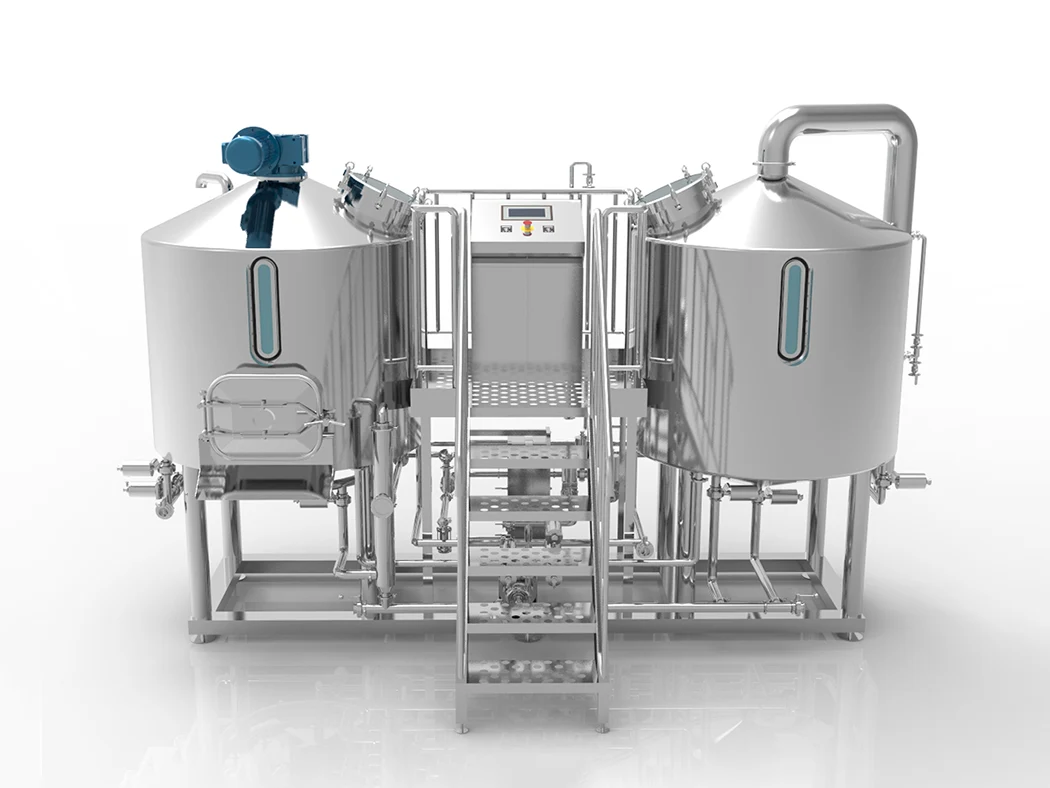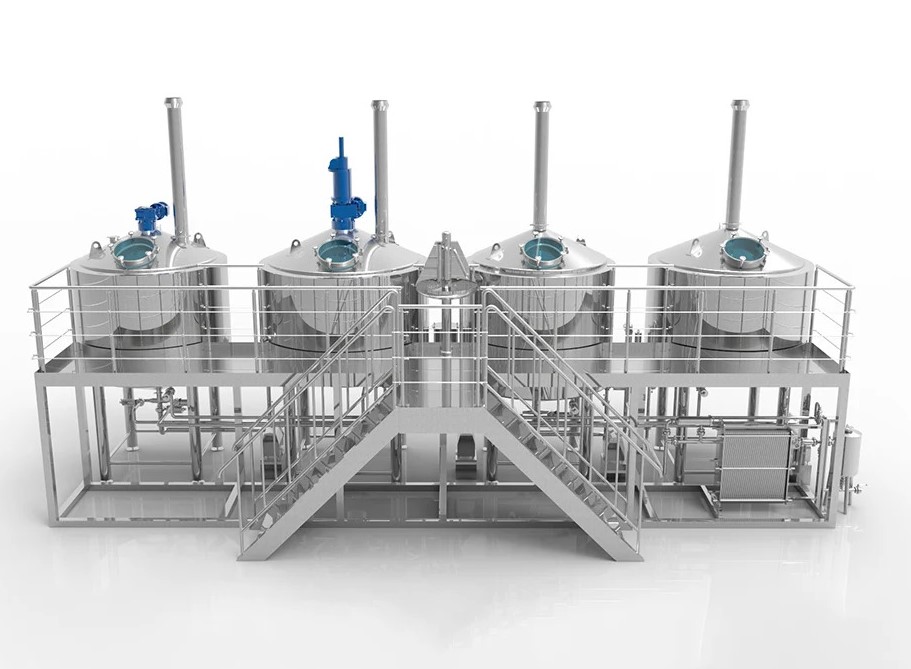Are you trying to break into the craft brewing scene but feeling overwhelmed by the complex world of nano brewery equipment? You’ve spent hours researching online, yet still can’t figure out which tanks, systems, and components you truly need. The technical specs swim before your eyes, and the fear of making a costly mistake grows with each passing day.
Let’s face it – the wrong equipment choice could waste thousands of dollars, delay your opening date, or worse, doom your nano brewery before you sell a single pint. Every day of confusion means more time your dream sits idle instead of becoming a reality. Without proper guidance, you risk buying equipment that doesn’t scale, breaks down frequently, or fails to meet health regulations.
Fortunately, this comprehensive guide will walk you through everything you need to know about nano brewery equipment. We’ll cover essential components, technical specifications, setup considerations, costs, and how to select the right vendor for your unique brewing vision. By the end, you’ll have the knowledge to make confident decisions that will set your nano brewery up for success from day one.
1. Core Nano Brewery System Components
Brewhouse Essentials
The heart of any nano brewing system is the brewhouse. This is where the magic starts. You need:
- Mash tuns – These hold your grain and hot water. The mash tun helps you extract sugars from grain.
- Boil kettles – After mashing, your wort goes here for boiling and adding hops.
- Whirlpool vessels – These help separate the hops and grain bits from your wort.
Each piece must work well with the others. Think of them as a team, not just single parts. Quality brewhouse components from experienced manufacturers can make a big difference in your final product. The best systems integrate seamlessly, allowing for consistent results batch after batch.
Fermentation Setup
After the brewhouse, your beer needs to ferment. You have two main options:
- Conical unitanks – These tanks let you ferment and condition beer in one vessel.
- Brite tanks – These are for the final conditioning and carbonation step.
Both need glycol cooling to keep the right temperature. Fermentation is where yeast turns sugar into alcohol. Good temperature control is a must for consistent flavor.
One brewer with a 3-BBL system found that upgrading to glycol-jacketed fermenters from Micet improved his beer quality dramatically. The precise temperature control allowed him to create more consistent batches and experiment with temperature-sensitive yeast strains.
Critical Support Systems
Your brewery needs more than just the main tanks:
- Glycol chillers – Keep your fermenters cold
- CIP (Clean-in-Place) systems – For proper sanitation
- Transfer pumps – Move beer between tanks
- Heat exchangers – Cool wort quickly after boiling
Without these support systems, your brewing process will face major hurdles. They may not be as exciting as the main brewing equipment, but they’re just as important for making good beer.
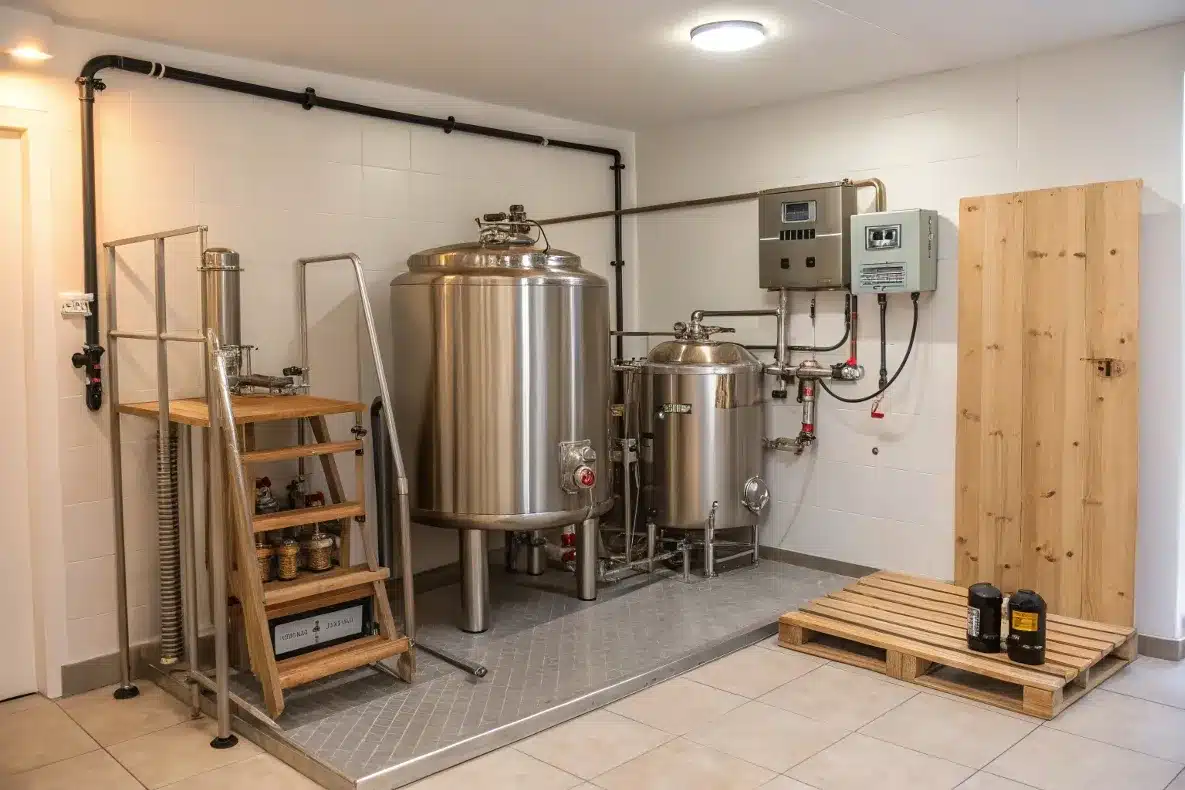
2. Key Technical Specifications Table
When shopping for nano brewery equipment, refer to this helpful specifications table:
| Equipment Type | Capacity Range | Key Features | Common Materials |
|---|---|---|---|
| Fermenters | 1-7 BBL | Glycol jacketed cooling, sample valves, pressure relief valves | 304/316L Stainless Steel |
| Brewhouses | 1-10 BBL | Direct-fire/electric heating, automation options, steam jacketing | 304 Stainless Steel with tri-clamp fittings |
| Glycol Systems | 1-5 HP | Temperature precision controls, proper reservoir size, digital displays | ASME-certified components |
| Bright Beer Tanks | 1-7 BBL | Pressure-rated for carbonation, sampling ports, CIP cleaning capability | 304/316L Stainless Steel |
| Mash Tuns | 1-10 BBL | Insulated walls, rakes/agitators, temperature probes | 304 Stainless Steel |
| Boil Kettles | 1-10 BBL | Direct fire or steam options, whirlpool inlets, sight glasses | 304 Stainless Steel |
| Control Panels | N/A | PID controllers, touchscreen HMI, automation capability | UL-listed components |
This table helps you compare different options side by side. Notice how materials and features change based on tank size and function. Quality manufacturers provide detailed specs for all equipment so you can make informed choices.
3. Implementation & Installation Considerations
Space Planning
One of the biggest mistakes new nano brewers make is not planning their space well. Your brewery layout affects:
- Work flow efficiency
- Future expansion options
- Staff movement and safety
- Cleaning access
Plan your space carefully with these tips:
- Draw your layout before buying equipment
- Leave enough room to walk around tanks
- Think about how beer will flow from step to step
- Plan for growth from day one
A well-designed 3-BBL system can fit in spaces as small as 800 square feet, but cramped conditions make brewing harder and less efficient. Working with companies that offer design services can help you maximize your space from the start.
Automation Options
Even small breweries can benefit from automation. Options include:
- Control panels with Variable Frequency Drives (VFDs)
- Human-Machine Interface (HMI) screens
- Brewing software integration
- Temperature controllers for precise fermentation
Automation costs more upfront but saves time and improves consistency. One brewery owner reported that adding a simple control system to his 5-BBL system from a specialized manufacturer reduced his brew day by three hours and virtually eliminated scorched wort issues.
Regulatory Compliance
Your equipment must meet safety and health standards:
- ASME certification for pressure vessels
- NSF certification for food-grade materials
- Local health department requirements
- Electrical code compliance
Don’t skip these! Non-compliant equipment can lead to:
- Failed inspections
- Costly retrofits
- Safety hazards
- Insurance problems
Working with established manufacturers who understand these requirements helps ensure your equipment will pass all inspections.
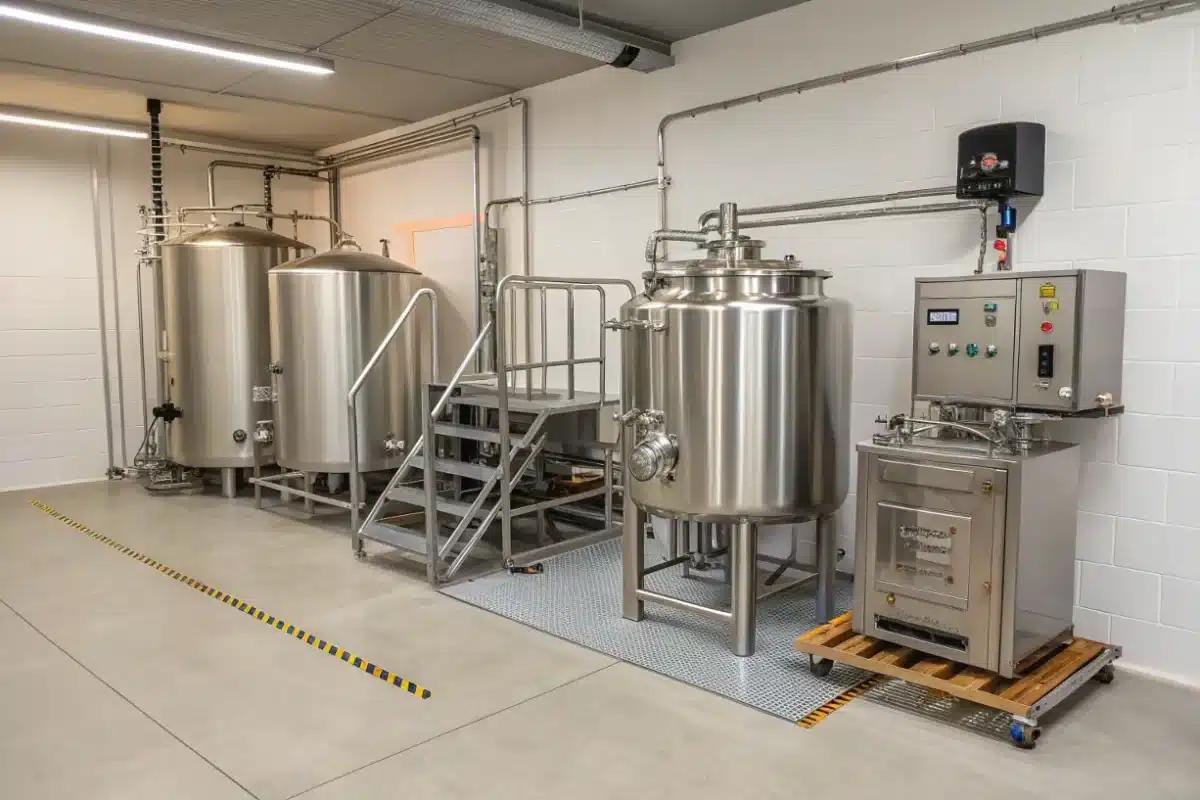
4. Cost Analysis and Budgeting
Entry-Level Packages
For those just starting out, expect to spend:
- $50,000 to $100,000 for a complete 3-BBL system
- This includes brewhouse, fermenters, and basic accessories
- Does NOT include glycol system, floor drains, or installation
Many new brewers get sticker shock when shopping for equipment. The truth is, quality equipment costs money, but it’s an investment in your business’s future. Cutting corners now often leads to higher costs later.
Major Cost Drivers
What makes brewery equipment expensive? These factors:
- Stainless steel quality – 304 vs. 316L grade
- Automation level – Manual vs. semi-automatic vs. fully automatic
- Glycol capacity – Larger systems cost more but cool better
- Fabrication quality – Welds, finishes, and overall construction
- Customization – Standard vs. made-to-order
A well-made fermenter might cost 30% more than a budget option, but will last years longer and cause fewer problems. Companies with their own R&D and production facilities often deliver better value because they control the entire manufacturing process.
Hidden Expenses
Don’t forget these costs in your budget:
- Installation labor – Plumbing and electrical work
- Facility upgrades – Floor drains, ventilation, water treatment
- Freight and delivery – Shipping large tanks is expensive
- Training – Learning to use your equipment properly
- Spare parts – Gaskets, valves, and other replaceable items
One brewer shared that installation costs for his small brewery equipment were almost 25% of his total budget. Working with manufacturers who offer installation support or guidance can help reduce these surprise costs.
Nano Brewery Equipment Costs & Specifications
3-BBL System Cost Breakdown
Equipment costs can range from $50K to $100K for a 3-BBL system 4
Equipment Capacity Ranges
Quality stainless steel construction ensures longevity and sanitation compliance 4
Common Materials
Food-grade stainless steel prevents contamination 4
System Warranty
Installation Considerations
- Space requirements: Minimum 800 sq ft for 3-BBL system 4
- Installation labor: Up to 25% of total budget 4
- Utility hookups: Essential for glycol systems and brewing 4
Vendor Features
| Feature | SS Brewtech | Spike Brewing | Micet Group |
|---|---|---|---|
| Customization | Limited | Moderate | Full |
| Warranty | 1 year | 1 year | 3 years |
| Design Services | No | Limited | Yes |
5. Vendor Selection Strategy
Top Manufacturers Comparison
The market has several options:
- Established brands like SS Brewtech and Spike Brewing offer reputation and support
- Specialized manufacturers like Micet Group provide customization and expertise
- Budget options exist but may compromise on quality or service
When comparing vendors, look at:
- Years in business
- Customer reviews
- Support services
- Warranty terms
- Custom design options
Working with manufacturers who have at least 10+ years of experience often provides peace of mind and access to expert advice throughout the equipment lifecycle.
Supplier Vetting Questions
Ask potential suppliers these questions:
- What is your lead time for equipment delivery?
- Do you offer service agreements?
- Can I buy modular components to expand later?
- What kind of warranty do you provide?
- Do you have references I can contact?
The answers will tell you a lot about the company. Look for suppliers who offer comprehensive warranties (like 3 years on tanks and 1 year on accessories) and have established service centers for after-sales support.
Real Success Story
A brewery in Colorado started with a 3-BBL system but planned for growth. They chose a manufacturer that designed their system with expansion in mind. Two years later, they scaled to 7-BBL with minimal retrofitting. The key was working with a vendor who understood their long-term vision and designed accordingly.
Companies that combine engineering design services with manufacturing capabilities can create truly customized solutions that grow with your business. Their experienced teams can anticipate problems before they occur and suggest practical solutions based on work with hundreds of other breweries.
6. Strategic Scaling Considerations
Modular Design Benefits
Smart nano breweries plan for growth:
- Add fermenters without replacing your brewhouse
- Upgrade glycol systems as you add tanks
- Install larger pumps and heat exchangers when needed
Modular design lets you grow piece by piece. This spreads costs over time instead of requiring huge investments all at once.
Manufacturers with extensive global experience often bring insights from markets at different stages of development, helping you anticipate scaling challenges before they arise.
Throughput Calculations
Understand how your equipment affects production:
- A 3-BBL system brewing twice weekly = 312 BBL yearly
- Adding just two 7-BBL fermenters can double output
- Bright beer tanks increase packaging flexibility
The math is simple but important. More fermenters mean more beer with the same brewhouse. Proper planning can maximize your equipment’s potential.
Future-Proofing
Smart initial choices save money later:
- Pre-plan utility hookups for additional tanks
- Buy a glycol chiller with extra capacity
- Install floor drains where future equipment might go
- Choose control systems that can expand
These steps cost a little more now but save thousands later. Working with manufacturers who offer engineering design services helps ensure your initial setup accommodates future growth.
7. Essential Brewing Accessories and Components
Pumps and Transfer Systems
Good beer movement needs proper equipment:
- Centrifugal pumps – Fast flow, but can damage beer
- Positive displacement pumps – Gentler on beer, better for finished product
- Tri-clamp fittings – Industry standard, easy to clean
- Brewery hoses – Food-grade, pressure-rated
Your transfer system affects beer quality. Poor transfers can introduce oxygen and spoil flavor. Quality pump systems from reputable manufacturers maintain beer integrity throughout the production process.
Cleaning and Sanitation
Clean equipment makes good beer:
- CIP spray balls – Clean tank interiors
- Caustic and acid cleaners – Remove beer stone and protein
- Sanitary fittings – Prevent bacteria harboring
- Tank cleaning verification – Ensures proper sanitation
Poor cleaning leads to infected beer. Invest in proper CIP components from day one. The best manufacturers build equipment with cleaning in mind, including proper drain ports and access points.
Quality Control Tools
Measure what matters:
- Thermometers and temperature controllers
- Pressure gauges
- Sampling valves and ports
- Sight glasses for visual inspection
Good data helps you make good beer. Budget for quality testing equipment. Breweries that partner with manufacturers offering integrated monitoring systems can often detect problems before they affect beer quality.
8. Making the Final Decision
Matching Equipment to Your Beer Style
Different beers need different equipment:
- Hop-forward IPAs benefit from whirlpool enhancements
- Lagers require more fermentation time and tank space
- Barrel-aged beers need transfers and storage solutions
- Fruited sours benefit from specialized equipment
Buy equipment that suits your flagship beers. This ensures your process works well for your signature styles.
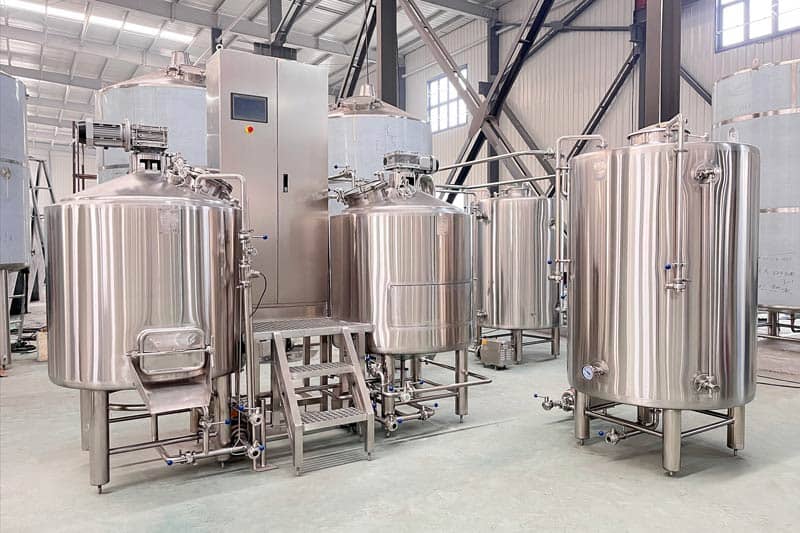
Return on Investment Analysis
Think long-term about equipment costs:
- Higher quality equipment often lasts 15+ years
- Lower maintenance costs save money over time
- Better beer quality builds your brand reputation
- Efficient systems reduce labor and utility costs
A complete ROI analysis includes all these factors, not just the initial price. Working with manufacturers who can demonstrate the long-term value of their systems helps you make better investment decisions.
Final Checklist Before Purchase
Before you sign the purchase order:
- Verified all specifications match your needs
- Confirmed installation requirements
- Checked warranty terms and service options
- Spoke with current customers using the equipment
- Understood lead times and delivery logistics
- Developed a training plan for your team
This careful review prevents costly mistakes. The best equipment partners offer comprehensive support throughout this decision process.
Conclusion
Starting a nano brewery is exciting but challenging. The right equipment makes all the difference between success and struggle. Take your time, do your research, and invest in quality components that will grow with your business.
Remember these key points:
- Buy quality core components – They touch your beer directly
- Plan your space carefully – Layout affects efficiency
- Budget for the hidden costs – Installation, freight, and training
- Choose vendors with experience – Their expertise helps you avoid mistakes
- Think about future growth – Smart initial choices make expansion easier
With the right nano brewery system and a thoughtful approach, you’ll be creating exceptional craft beer that stands out in today’s competitive market. Your equipment is the foundation of your brewery’s success – choose wisely!
By following this guide, you’ll avoid the common pitfalls that trap many new brewery owners and set yourself up for years of successful brewing. The craft beer community awaits your unique contribution!

